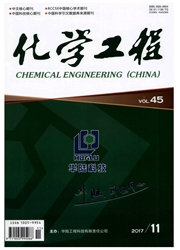

 中文摘要:
中文摘要:
分别比较了单独采用一株硫酸盐还原菌(SRB)2-1—5u-2b、解磷菌(PSB)4-5a-1和二者联合对Cd^2+的钝化效应,通过响应面法优化SRB—PSB联合钝化Cd^2+的影响因素,并验证了其对Cd污染土壤的钝化效应。由结果可知:对比单独和联合细菌的钝化效果,2-1—5u-2b和4—5a-1能够协同钝化Cd^2+,钝化效率显著增加(P〈0.05),Cd^2+质量浓度为200mg/L时,钝化效率最高可达83.16%;响应面优化SRB—PSB联合钝化结果表明最优条件为,初始Cd^2+质量浓度为229.0mg/L、L-半胱氨酸盐酸0.619g/L、SRB与PSB的接种比例为2.4:1.6,此时,Cd^2+钝化效率增加至91.84%。将2-1-Su-2b,d-Sa-1,优化前后的联合培养细菌施用于Cd污染土壤中,对Cd的钝化效率分别为28.91%,24.85%,34.36%和41.23%。因此,证明了SRB—PSB共生体系对土壤Cd污染的钝化作用优势明显,响应面法适用于对微生物钝化土壤Cd污染的优化。
 英文摘要:
英文摘要:
The single sulfate reducing bacteria (SRB) 2-1-Su-2b and single phosphate solubilizing bacteria (PSB) 4-5a-1 and combined bacteria were compared to deactive the Cd^2+ pollution in soil. And optimized SRB-PSB system was used to indicate the deactivation to Cd contaminated soil by response surface methodology. The results indicate that, the deactivation rate of combined strains 2-1-Su-2b & 4-5a-1 is significantly better than single SRB or PSB (P 〈0.05), especially, it is up to 83. 16% at Cd^2+ 200 mg/L. Furthermore, Plackett-Burman design, steepest ascent design and central composite design were programmed to analyze relevant factors of deactivation rate, which was considered as traditional three steps of response surface methodology (RSM). The procedure shows that the most optimized term is initial Cd^2+ 229.0 mg/L, L-cysteine hydrochloride 0. 619 mg/L, inoculation ratio 2.6: 1.4. On this condition, deactivation rate can reach 91.84%, higher than the before. Then, SRB, PSB, combined group and optimized combined group were used to deal with Cd in soil and the deactivation rates were 28.91%, 24.85%, 34.36% and 41.23%, respectively. The optimization scheme suggestes that SRB-PSB system has advantages to deactive Cd, the optimization of RSM is feasible and effective on Cd pollutant in soil.
 同期刊论文项目
同期刊论文项目
 同项目期刊论文
同项目期刊论文
 Enhancement of NA of a free living nitrogen-fixing bacteria by combination of Dielectric Barrier Dis
Enhancement of NA of a free living nitrogen-fixing bacteria by combination of Dielectric Barrier Dis 期刊信息
期刊信息
